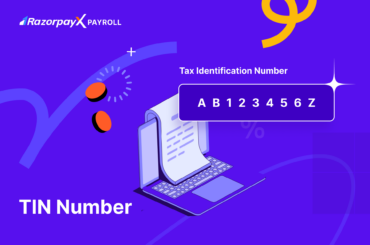Table of Contents
Introduction
Did you know that unscheduled absenteeism rate ranges from 5% to 10% per year leading to loss in potential revenue. This figure not only highlights the financial stress on companies but also the growing importance of managing leave policies effectively.
Among these policies, one is the loss of pay system where employees lose pay due to leaves without any prior approval.
For employees, LOP affects monthly income directly. For businesses, accurate tracking of LOP ensures that payroll processing happens error-free, thus improving transparency and trust.
In this article, we’ll explore what loss of pay means, its implications for employees and employers, how LOP days are calculated, and how employees can apply for a LOP reversal.
What Does Loss of Pay Mean for Employees?
Loss of Pay (LOP) refers to a deduction from an employee’s salary when they take time off from work without enough paid leave or when they fail to obtain prior approval.
In simpler terms, LOP occurs when an employee takes leave but doesn’t have the required leave balance or permission.
For example, if an employee is entitled to 10 paid leave days annually but takes 11 days off, they will lose a day’s pay for that extra leave. LOP makes sure that employees’ get paid for the actual days they worked for.
In HR, loss of pay is a key concept when managing leave policies. HR departments track LOP to ensure employees don’t take unauthorized leaves, maintaining fair salary structures for all.
How Is Loss of Pay Calculated and Applied?
Loss of pay is calculated by subtracting an employee’s daily wage for the number of days they took LOP leave. The basic formula used is:
LOP = Employee’s monthly salary / Number of working days in the month) X Number of LOP days
For example, let’s assume Harshad earns ₹60,000 per month, and his company has 22 working days in a month. If Harshad takes 3 days of LOP leave, the calculation would be:
LOP = (60,000 / 22) X 3
LOP = ₹2,727 X 3 = ₹8,181
So, Harshad’s LOP deduction for the month would be ₹8,181, leaving him with ₹51,819 in take-home pay.
Companies may have there own way of calculating the number of working days. Some HRs do exclude weekends, while others make calculations based on the actual calendar days.
If you find this process too confusing, then RazorpayX Payroll might be the one thing you are looking for!
With RazorpayX Payroll everything from leave tracking, monitoring leave balances, and ensuring precise deductions on salary slips can be automated. With automated systems, HR teams can avoid manual errors and streamline payroll management, making LOP calculations hassle-free.
How Does Loss of Pay Work Legally?
The legality of LOP depends on two things employment laws and company policies.
In most regions, employers have the right to deduct pay for unapproved leaves or those with insufficient paid leave balance. However, on the other side employee protection laws often set a minimum paid leave requirement and limit the total accumulation of LOP.
To manage LOP legally, companies must establish clear policies outlining when LOP will apply, how it will be calculated, and what would be the consequences for exceeding the allowed unpaid leave balance.
These regulations will ensure that both employees and employers receive fair treatment and abide the law.
What are the Causes of Loss of Pay
Loss of pay is a common problem in many companies. The causes for it also vary accordingly. LOP can occur due to various internal and external factors, whic in-turn can affect employee compensation and company’s payroll management.
Here’s few prominent causes of LOP:
- Unauthorized Leaves: Employees taking leave without prior approval from their supervisors is one of the common causes of LOP deductions. This can seriously disrupt workflow, reduce productivity, and affect team coordination.
- Extended Unapproved Absences: Another common reason is long-term absences without proper permission. This can decrease efficiency and delay important tasks, thus impacting overall work performance.
- Documentation Issues: Incomplete or improperly submitted leave requests or documentation can also result in the rejection of paid leave. This adds a LOP to your salary slip due to failure to providing a legit proof of absence.
How Does Loss of Pay Affect Payroll and Employee Benefits?
Loss of pay directly affects payroll processing by reducing an employee’s total earnings for the pay period.
When an employee takes LOP leave, their gross salary gets reduced, which directly impacts deductions like taxes and employee benefits.
This is why, HR teams face challenges while tracking LOP cases. Thus, it becomes necessary to make accurate salary calculations, and ensue compliance with payroll regulations.
LOP also affects employee benefits as it is directly linked to an employee’s salary.
Benefits such as EPF (Employees’ Provident Fund), gratuity, and ESI (Employees’ State Insurance) are all calculated based on the employee’s salary.
- EPF Contributions: These are deducted as a percentage of an employee’s basic pay. When LOP reduces the basic salary, the employee’s EPF contribution also decreases, thus impacting his/ her long-term savings.
- Gratuity: The amount paid as gratuity entirely depends on the employee’s last drawn salary and tenure with the company. If LOP reduces the last drawn salary, the gratuity amount will also decrease.
- ESI Contributions: Both employees and employers contribute 4% of the employee’s gross salary towards ESI. A reduction in the gross salary due to LOP will lower the ESI contributions.
How to Avoid Loss of Pay in your Salary Slip?
Loss of pay in attendance can impact your salary slip, inturn reducing your total earnings and affecting your financial stability. To prevent LOP deductions, you can follow these proactive steps:
Communicate Your Leave in Advance
Make sure to you inform your management or HR well in advance whenever you’re planning for a time off. This gives them enough time for proper scheduling or finding replacements, thus helping to avoid LOP in your salary slip.
Compensate for Lost Time
If you take LOP due to emergencies, work extra hours or overtime to make up for the missed time. This will reduce stress and ensure your salary remains intact.
Track Your Leave Balance Regularly
Stay aware of your leave balance. If there’s any LOP, address it promptly by compensating with extra work. If you have unused leave, it allows for a break without affecting your salary.
Avoid Unnecessary Leaves
Taking leaves without sufficient balance hampers your productivity and income. Remember to use your leaves only when needed, and within your leave balance to avoid any LOP deductions.
Mitigating LOP requires mutual collaboration between both employers and employees. This can happen only after proper communication about leave policies, flexible work arrangements, and employee assistance programs.
Using systems like RazorpayX Payroll can help organisations simplify the leave tracking process and provide transparent communication, avoiding LOP errors. As a result, payroll processing can become more accurate.
Conclusion
In conclusion, loss of pay (LOP) can have a significant impact on both payroll and employee benefits.
To minimize LOP, clear communication, tracking leave balances, and timely compensation are essential. Employers should implement transparent leave policies and flexible work arrangements to reduce LOP occurrences.
By adopting these strategies, employees can also maintain their salary integrity and ensure better management of leave-related deductions.
FAQs
- Can Employers Grant Compensatory Leave to Avoid LOP?
Yes, many employers offer compensatory leave for work done on weekends or holidays, helping employees make up for missed days and reducing LOP deductions.
- Are There any Limits on How Many LOP Days an Employee Can Take in a Given Period?
Generally, there are no strict limits, but company policies vary. Employees should review their organization’s leave policy or consult HR to understand any specific guidelines regarding LOP.
- Does Loss of Pay Affect Gratuity and Benefits?
Yes, LOP reduces the employee’s gross salary, which impacts benefits like gratuity, EPF, and ESI contributions. These benefits are often linked to the employee’s salary, affecting long-term entitlements.
- What is the Rule for LOP During Notice Periods?
During notice periods, employers may not approve unpaid leave unless specified in the contract or company policy. LOP deductions can apply unless approved leave is granted.
- What Happens When Employees Take Leave Without Prior Approval?
Taking leave without prior approval results in LOP deductions, affecting the salary. It can also lead to disciplinary action depending on company policies.





